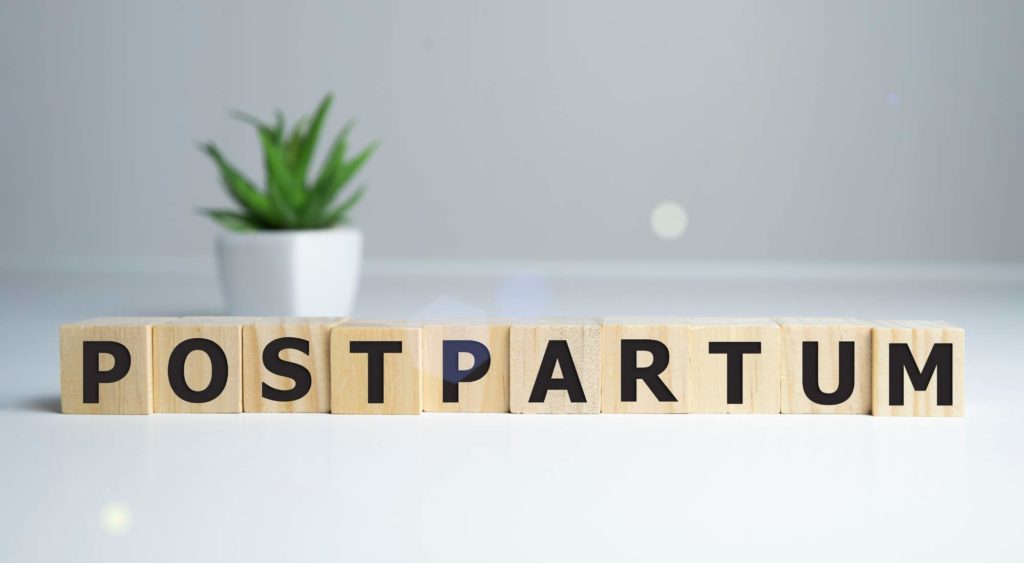Postpartum Physical Therapy

Physical Therapy for Postpartum Recovery – Information, Exercises, and More
If you’ve ever had a baby, then you know that pregnancy and childbirth change your body.
You don’t feel the same, you don’t look the same. And it can feel like your body will never go back to ‘normal.’
There’s good news and bad news: some changes are lasting, but you can get your body back and return to proper physical function.
Physio after childbirth can retrain your body to do what it is supposed to do and help get everything back ‘in place.’
This guide explains how.

Contents
- What is Postpartum?
- What Causes Postpartum Recovery Difficulties?
- Diastasis Recti Causes
- Pelvic Floor Dysfunction Causes
- Postpartum Symptoms
- Diastasis Recti Symptoms
- Pelvic Floor Dysfunction Symptoms
- 3 Options for Pelvic Floor Therapy Postpartum
- #1: Time
- #2: Therapeutic Exercise
- #3: Surgery
- Postpartum Physical Therapy – Will PT Help Me?
- Best Postpartum Exercises
- Pelvic Muscle Contractions
- Low-Intensity Abdominal Exercises
- Balance Exercises
- How In Motion O.C. Can Help With Pelvic Floor Therapy Postpartum
What is Postpartum?
Postpartum means after childbirth. It is the period after your baby has been delivered.
For new moms, it is the time when you are trying to find a new normal and take back your bodies.
It can also be a time of …
- Pain
- Discomfort; and
- Displeasure
… if you are not feeling like yourself.
What Causes Postpartum Recovery Difficulties?
During the nine months that you carry a baby, your body undergoes significant changes.
Pregnancy is no walk in the park.
Among the difficulties women can face during postpartum recovery are:
- Separated abdominal muscles
- Lower belly pooch
- Back pain
- Poor posture
- Incontinence
- Frequently feeling the need to urinate
- Constipation
- Neck and shoulder pain from breastfeeding
- Decreased or diminished sexual function
Many of these symptoms are the result of diastasis recti and pelvic floor dysfunction.
Pelvic floor therapy postpartum can help and the Doctors of Physical Therapy at In Motion O.C. can assist you in addressing these postpartum issues.
Diastasis Recti Causes
If you’ve noticed an unusual gap between your ab muscles, you might be experiencing diastasis recti.
As your abdomen stretches to accommodate a growing baby, your muscles must stretch to make room.
If this stretching results in muscle separation that does not repair itself after giving birth, it can cause a protruding belly and affect pelvic floor muscles.
You may be at higher risk of developing diastasis recti if you:
- Have had multiple pregnancies
- Gave birth to multiples (twins, triplets, etc.)
- Had poor muscle tone before pregnancy
- Gave birth at a later stage in life
- Are petite or have a small frame
Pelvic Floor Dysfunction Causes
Delivering a baby takes some serious muscle power.
The muscles of the pelvic floor can become weak, or even damaged, after such an intense experience.
Pelvic floor dysfunction occurs when the muscles of the pelvic floor become weak or damaged, often postpartum.
This can result in painful, uncomfortable, or even embarrassing symptoms.
Postpartum physical therapy can help retrain the muscles and allow them to successfully recover from childbirth.
Postpartum Symptoms
Most postpartum symptoms can be linked to two things: diastasis recti and pelvic floor disorders.
From back pain to “baby belly,” these conditions cause a lot of postpartum pain and discomfort.
Diastasis Recti Symptoms
At some point during your pregnancy, you may have looked down and wondered, “how big will my belly get?”
All of that stretching to make room for your baby pulls the left and right abdominal muscles further and further apart.
If you have diastasis recti, you probably notice these common symptoms:
- Wider than normal gap down the middle of your abdominal muscles
- Protruding belly, usually below the navel
- Weak pelvic floor muscles
- Lower back pain
For most women, the muscles repair themselves and return to normal within six months.
But more than one-third of postpartum women experience unresolved diastasis recti.
Pelvic Floor Dysfunction Symptoms
If you leak urine when you laugh or cough, you might have weak muscles or pelvic floor dysfunction.
Pelvic floor dysfunction symptoms can include:
- Pain during intercourse
- Feeling the need to urinate more often than usual
- Leaking urine when you laugh, cough, or exercise
- Trouble emptying your bladder completely
- Constipation or other bowel issues
- Prolapse of the pelvic organs
While these symptoms are common after giving birth, they should diminish within a few weeks or months.
If you are still experiencing these issues after several months, or you just want to ensure proper recovery, you aren’t alone.
3 Options for Pelvic Floor Therapy Postpartum
Pelvic floor therapy postpartum can restore your pelvic floor muscles to their original glory, reducing — likely eliminating — symptoms altogether. Taking time to take care of yourself postpartum is important.
It’s not selfish to take care of yourself. Your body has done an amazing thing.
Helping your body recover from postpartum issues is important. Whether your body just needs time or some helpful intervention, you can start feeling more like yourself again with a little care.
#1: Time
Most postpartum physical issues, like diastasis recti and pelvic floor disorder, resolve themselves within a few weeks or months after giving birth.
Your doctor should monitor your situation. You can discuss your symptoms and recovery during your postpartum check-up.
#2: Therapeutic Exercise
One way to restore weak muscles is with careful and specifically designed exercises.
Certain exercises, like Kegels, are done to strengthen pelvic floor muscles before and after childbirth.
Pelvic floor muscle contractions have been shown to reduce incontinence and improve sexual function in postpartum patients.
Gentle and targeted core exercises can also improve the strength and function of the pelvic floor muscles.
Many patients find success in treating these disorders with physio after childbirth. When to start depends on each individual patient and their unique body, and should be discussed with your healthcare provider or a licensed physical therapist.
#3: Surgery
In more extreme cases, surgery may be required to repair damaged muscles.
Surgery has been shown to effectively repair abdominal muscle walls in diastasis recti patients.
The results are usually long-lasting, but patients may face complications, such as:
- Reopening of the wound
- Seroma
- Wound infection
- Scarring
- Skin loss
- Loss of the umbilicus
Your doctor can help determine if this treatment option is necessary for your situation.
Postpartum Physical Therapy – Will PT Help?
Postpartum physical therapy exercises are one of the most effective methods for treating the physical challenges women face after having a baby.
If you are currently postpartum, pelvic floor physical therapy can help you reduce, and even eliminate, the embarrassing symptoms of weak muscles, like leaking urine when you cough.
A physical therapist can develop a postpartum physical therapy treatment plan that addresses your individual needs.
By retraining the muscles of the abdomen or pelvic floor, physical therapy can reduce symptoms and help you feel like yourself again.
Best Postpartum Exercises
Postpartum physical therapy exercises can help you get rid of that baby belly and restore your body to excellent condition.
While not all exercises are recommended postpartum, some can help combat postpartum issues.
Pelvic Muscle Contractions
You’ve probably heard of pelvic floor muscle contractions by a different name: Kegels.
This exercise consists of alternately contracting and relaxing the muscles of the pelvic floor.
Most patients can start by holding the contraction for 1-3 seconds before relaxing again.
It is important to perform these properly and breathe through the contractions for maximum effectiveness.
Low-Intensity Abdominal Exercises
Restoring strength to weakened abdominal and pelvic floor muscles is fairly straightforward.
Before you start doing sit-ups, consider the intense changes your body has undergone. If you have to strain or hold your breath to complete the movement, it is too intense and you should start with something less strenuous.
Some easy postpartum abdominal exercises include that may be recommended by a doctor of physical therapy include:
- Modified plank
- Pelvic tilts
- Pelvic bridge
- Heel slides
Certain exercises or movements can worsen symptoms of diastasis recti and pelvic floor dysfunction.
Working with a Doctor of Physical Therapy to determine the exercises that will best help you during your postnatal physical therapy can prevent further injury or discomfort.
Balance Exercises
Besides giving you a great core workout, balance exercises can help reduce back pain and improve posture.
Balance exercises can also improve stability and reduce the gap between abdominal muscles seen in patients with diastasis recti.
Your physical therapist may have you do balance work on a Bosu ball or yoga ball to strengthen core muscles without unnecessary strain.
How In Motion O.C. Can Help With Pelvic Floor Therapy Postpartum
Having a baby is an unforgettable event. The physical effects it has on your body don’t have to be.
Getting your body back could be as simple as letting the physical therapists at In Motion O.C. develop a specialized postnatal physical therapy plan that fits your unique needs.
Rated as the number one physical therapy clinic by users on Yelp! and Google, In Motion O.C. gives every patient the care and attention they deserve.


